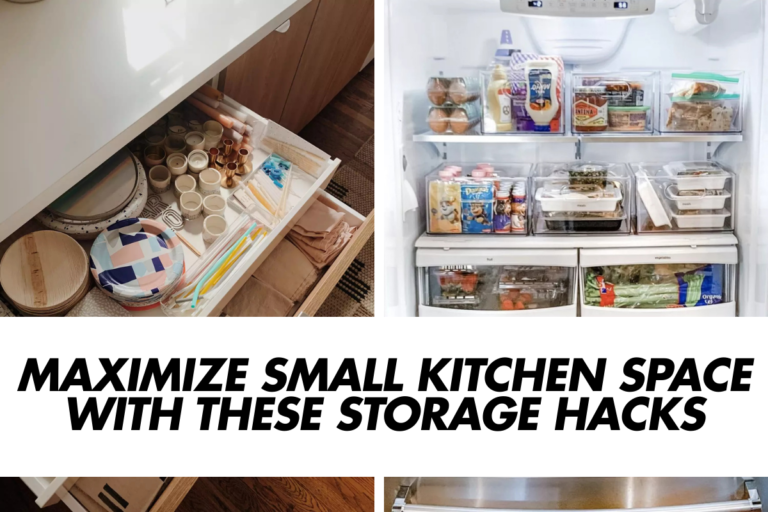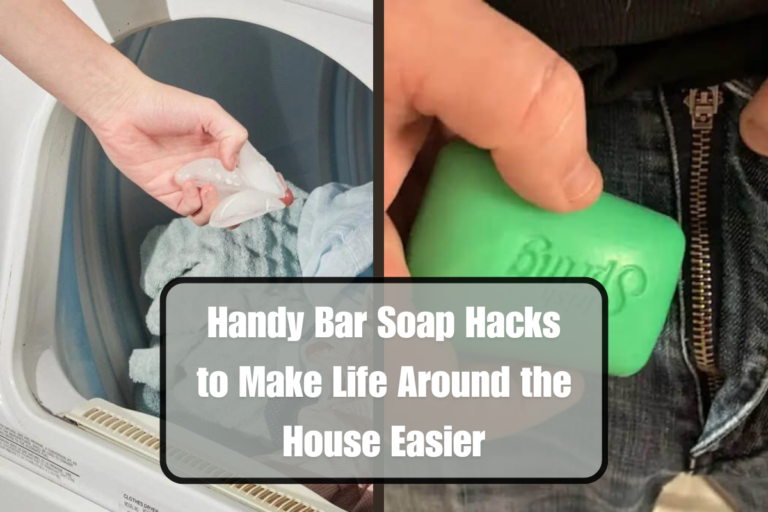15 Unbelievable Vinegar Hacks for Effortless Cleaning
Vinegar is an obvious kitchen staple but while most people are aware of its culinary uses, few realize its cleaning potential. Thanks to its natural acidity and antibacterial properties, vinegar can work wonders for household cleaning. In fact, here are 15 fabulous vinegar cleaning tips that will not only make your home sparkle — they will also help you avoid nasty chemicals.
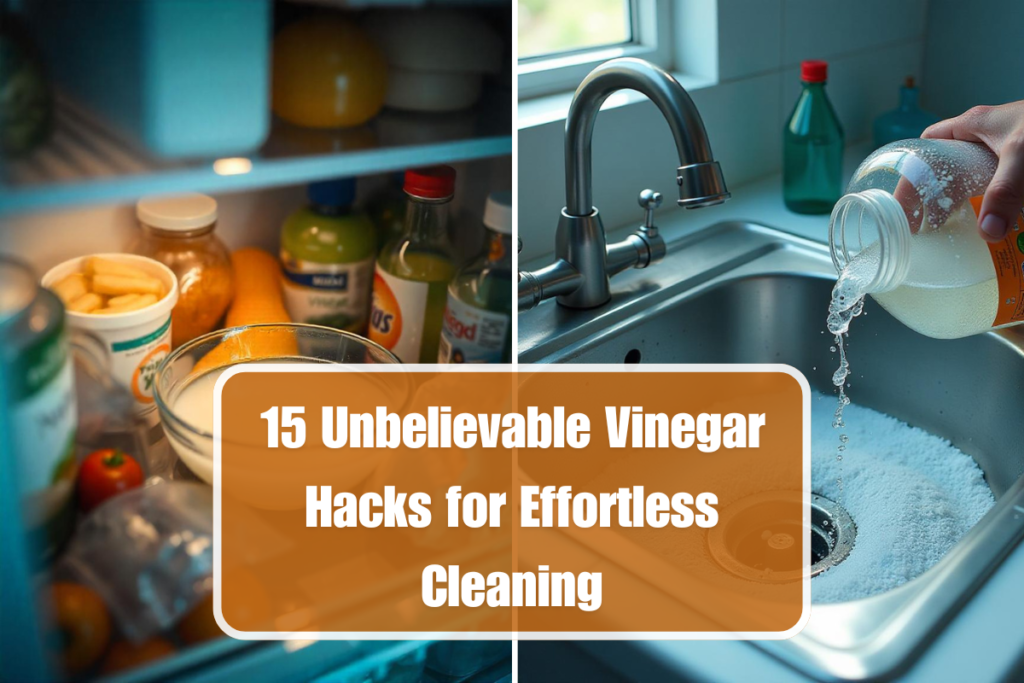
1. All-Purpose Cleaner: Your Go-To Cleaning Solution
Why This Works: The high acidity of vinegar (typically 5%) gently dissolves grime and has a strong degreasing power. It becomes a little acidic in nature, and it can dissolve those mineral deposits, grease, and dirt, which accumulate on different surfaces. It also boasts mild antibacterial properties which means it can prevent some germs and bacteria from hanging around on surfaces without needing to use strong disinfectant.

How to Use It:
- Put equal amounts of white vinegar and water in a spray bottle.
- Apply this cleaner to a microfiber cloth and wipe down the countertops, appliances, and so on.
Easy enough for daily use and safe on most surfaces, skip the vinegar on marble and granite, says Reed, as its acidity will dull and destroy porous materials over time.
2. Deodorize Your Home Naturally
Why It Works: Vinegar contains acetic acid, which works at neutralizing odors instead of simply masking them like many air fresheners. By binding to airborne mildew-harboring molecules, the acetic acid splits them and changes their structure so that they no longer smell bad. Vinegar specializes in getting rid of musty, stale, or even strong odors making it a great chemical-free choice for deodorizing.

How to Use It:
- Put a bowl of vinegar in a room, in a fridge, or wherever the smell is bad smelling.
- Leave it in the open for several hours or overnight for the vinegar to soak up the smells.
When the vinegar is done doing its thing, toss it out and breathe freely.
Erase Hard Water Stains with Ease
Why It Works: Hard water spots result in deposits of minerals like calcium and magnesium. Because these deposits are alkaline, soaking in an acid such as vinegar is the ideal means of partially dissolving them. Vinegar acts as a solvent and eats away at mineral deposits, resulting in clean and shiny surfaces with no scrubbing required.

How to Use It:
- Soak material in vinegar, then wrap it around faucets, shower heads, or any surfaces with hard water stains.
- Allow it to rest for an hour or two so the vinegar can soak into the grime.
- After applying the solution, wipe the surface with a wet cloth.
This hack helps a lot in bathrooms and kitchens, bringing back the shine to your faucets and eliminating those ugly white spots
4. Disinfect Cutting Boards Like a Pro
Why Its Effective: Cutting boards, particularly wooden ones, can harbor bacteria after being in contact with raw meat or vegetables. Vinegar is lethal to bacteria because the acetic acid easily penetrates the walls of the bacteria and kills them. A natural and safe way to disinfect food contact surfaces to keep the kitchen sanitary.

How to Use It:
- Dip a cloth in vinegar and rub it thoroughly over your cutting board.
- After the cleaning rinse with warm water.
This is very helpful with wooden boards, since they are very porous, and will soak up any harmful chemicals you might find in other cleaning products. Vinegar is a natural cleaner that deodorizes without any harmful residue.
5. Streak-Free Windows and Glass
How It Worked: The vinegar cuts through the caked-on dust, dirt, and greasy residue that builds up on the glass and it dries streak-free. They often use glass cleaners that can be laden with ammonia which is harsh and creates streaks or fog on the surface. Vinegar, on the other hand, quickly removes dirt and evaporates, leaving only perfect glass behind.

How to Use It:
- This collapses to approximately one portion of vinegar and two pieces of water blended in a shower bottle for an adjusted arrangement.
- To achieve a streak-free finish, spray this ingredient on windows or mirrors and wipe with lint-free cloths or newspaper.
To add a splash of shine, drag a squeegee across the surface to get rid of any excess liquid.
6. Freshen Up Your Laundry Naturally
Why It Works: Since laundry detergents can leave behind a residue on fabric, these residues can leave clothes feeling stiffer and attract other odors. What vinegar does is cut through the detergent and minerals trapped in the fabric. Because of its acid, it can help dissolve the soap residue and its natural softener property allows fabrics to feel fresh without the necessity of softeners which might have harsh chemicals.

How to Use It:
- Everyone can use a fresh load of clothes every now and again, right? Simply add 1 cup of white vinegar during the rinse cycle of your washing machine.
Not only will your clothing feel softer, but it also helps neutralize odors left behind and keeps whites bright without fading.
7. Unclog Drains the Natural Way
How This Helps: When vinegar is combined with baking soda, a chemical reaction occurs; the reaction releases carbon dioxide and water. This fizzing helps separate and dislodge debris that may be stuck in drains like grease, hair, and soap scum. The acidity of the vinegar dissolves the clog, so it is easier to flush Áway.

How to Use It:
- Then I split a cup of vinegar down the sink and half a cup of baking soda. Leave it to stand for half an hour and then wash off with hot-warm water.
It is eco-friendly, gentle on pipes, and great for small clogs.
Eliminate Carpet Odors
Why It Works: Pet odors, spills, and general use stick to carpets. Vinegar works to neutralize these odors by breaking down the compounds that emit them and creating a strong odor. The acetic acid of vinegar evaporates as it dries, carrying along the odors and leaving no harmful residue.
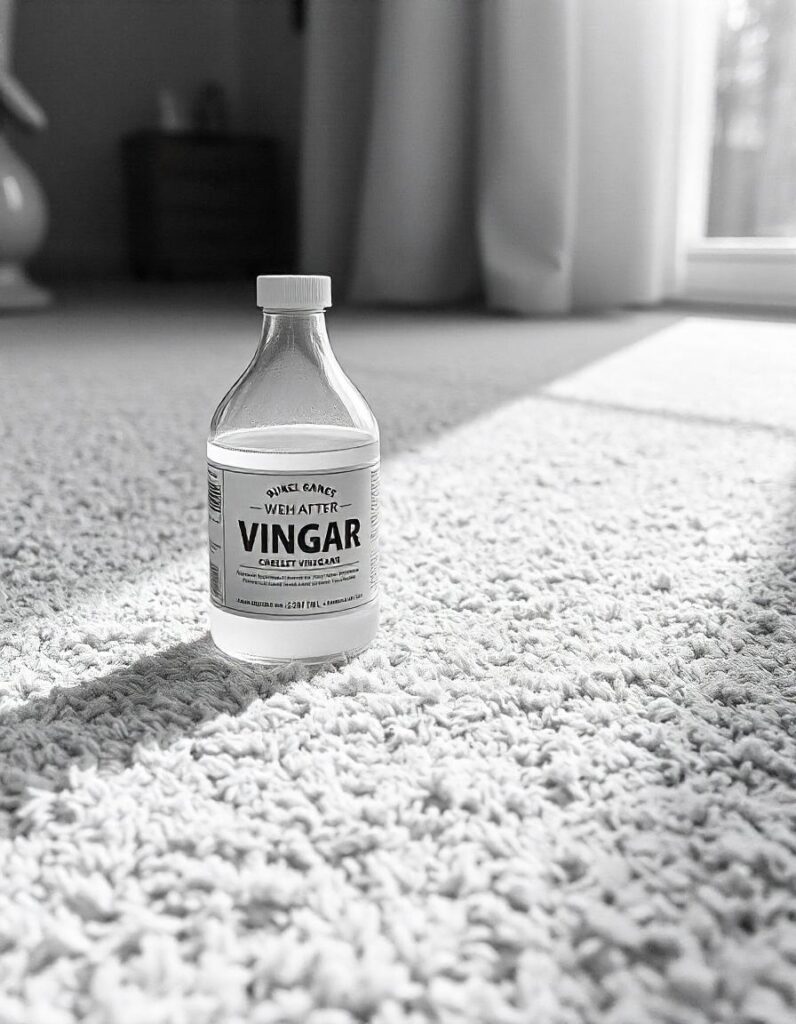
How to Use It:
- Fill a spray bottle halfway with a solution of equal parts vinegar and water.
- Spray your solution on your carpet lightly and allow it to air dry.
Once it dries, the smell of vinegar will go away, taking any nasty odors with it and leaving your carpets fresh and clean!
9. Polish Stainless Steel Surfaces
Why it Works: Stainless Steele appliances leaves fingerprints, smudges, and grime. Vinegar cuts through grease and oils while also returning the natural shine to stainless steel surfaces. The acidity removes the streaks and smudges that accumulate while ensuring that the metal is never damaged.

How to Use It:
- Moisten a cloth with vinegar and wipe your stainless steel appliances.
- After you have applied, polish the surface with a dry cloth for extra surface shine and polish.
It maintains the sleek and neat appearance of your kitchen.
10. Remove Soap Scum in the Bathroom
Why It Works: Soap scum is a combination of soap, minerals in hard water, and body oils that builds up on bathroom surfaces. The acidic nature of vinegar breaks down the alkaline elements of soap scum, thus making it easier to wipe away.

How to Use It:
- Undiluted vinegar spray is ideal for soap scum in showers, bathtubs, and sinks.
- Leave it to sit for 15 minutes and then scrub it with a sponge or cloth.
A no-fuss way to get your surfaces in the bathroom sparkling right up.
11. Clean the Microwave Effortlessly
Why it works: The steam produced by boiling vinegar helps to loosen food debris and grease in the microwave. Vinegar has acetic acid, so it breaks down all that grease, and neutralizes bad smell, so it is easy to simply wipe away the dirt without having to scrub it.
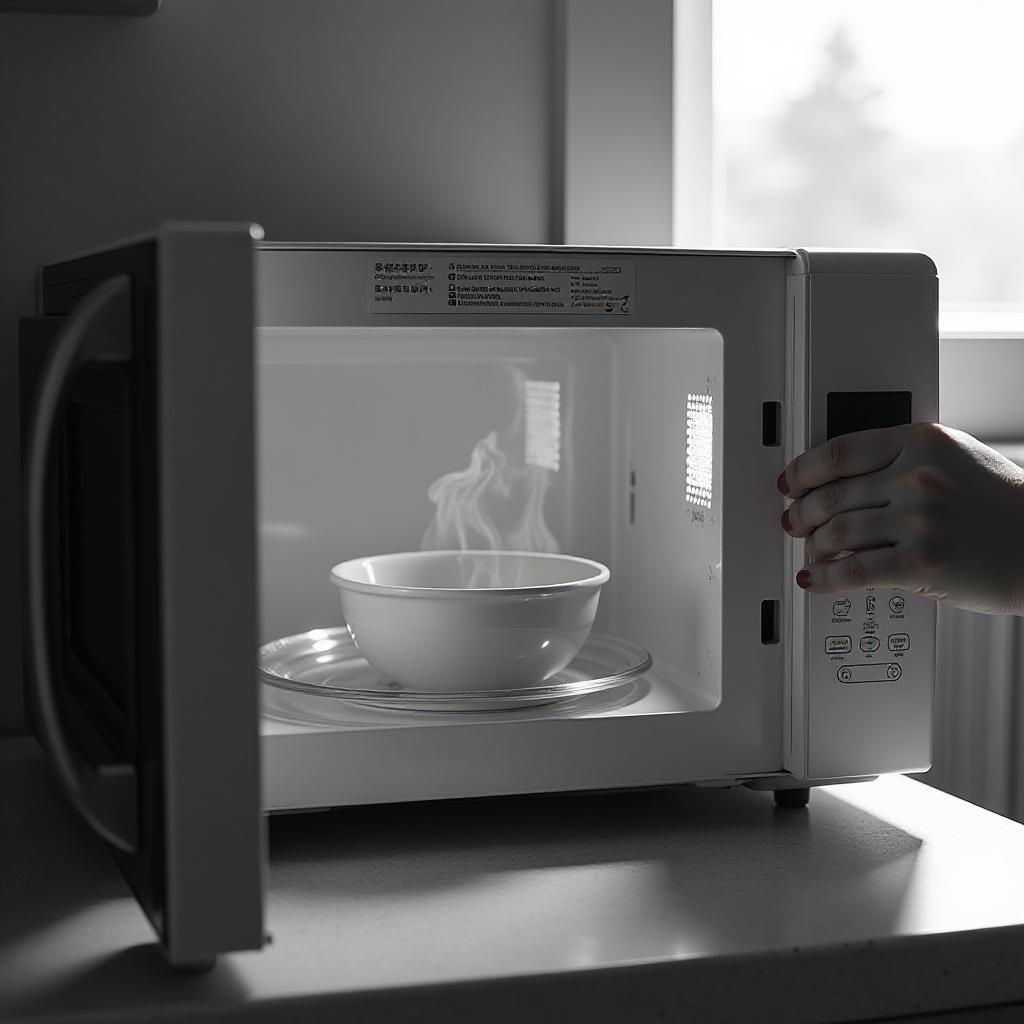
How to Use It:
- Mix ½ cup vinegar & ½ cup water in a microwave-safe bowl.
- Place in microwave and steam the inside for 3-5 min.
- When finished, take out the bowl with caution and use a cloth to clean the inner microwave.
Not only this, but this hack also leaves your microwave free from strong stains and smells, making it clean and fresh.
12. Brighten and Deodorize Your Dishwasher
How It Works: Over the years, dishwashers can get build-ups of soap scum, food particles, and smells. Vinegar also deodorizes the interior of the appliance by dissolving these residues. It also gets rid of hard water rainy deposits and makes your dishwasher run better.
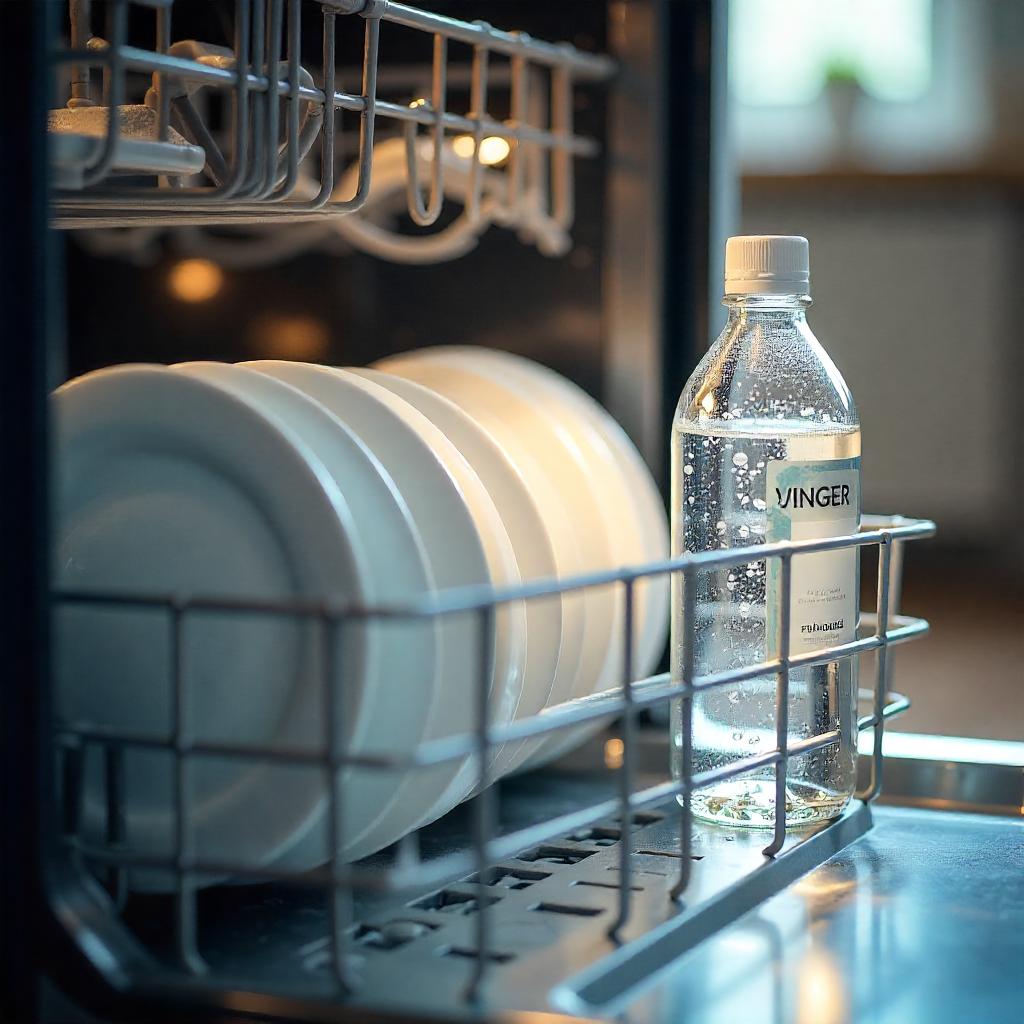
How to Use It:
- Add a cup of white vinegar to the bottom of your dishwasher (it can also go in a bowl on the top rack)
- Do a run on a hot water cycle with no dishes.
Doing this will help your dishwasher freshen and clean itself while also keeping it running properly.
13. Clean Cloudy Glassware
Why it Works: Glassware that comes out of the dishwasher looking cloudy is often the result of hard water deposits that have dried on and been baked in. The acidity of vinegar also dissolves these deposits so your glasses look crystal clear again.

How to Use It:
- Fill cloudy glassware to the brim with a mixture of equal parts vinegar and water and let sit for 30 minutes.
- After soaking, rinse glassware with warm water and dry utilising a lint-free cloth.
This little, but effective remedy will make your glassware shine as good as new.
14. Tackle Greasy Kitchen Cabinets
What makes it work: Over time, kitchen cabinets become sticky and greasy as a result of cooking fumes and other handprints over the years. The vinegar is an effective grease cutter without harming the finish of your cabinets.

How to Use It:
- Blend equal ratios of vinegar and water in a splash jug to assemble a cleaning arrangement.
- Mist the solution on your cabinets and wipe down with a soft cloth.
This is a mild degreaser that causes a very young cabinet appearance.
15. Clean Pet Urine Stains
Why It Works: Vinegar is a great deodorizer that helps neutralize the ammonia scent of pet urine. The acidic nature ot its content breaks down the alkaline substances, and its antibacterial properties disinfects the area.

How to Use It:
- After dabbing the urine, spray with equal parts vinegar and equal parts water.
- Let the solution sit for 5 minutes, and the blot the area with a clean cloth.
It also helps with odor elimination and in case of accident, your house will still stay fresh.
Vinegar isn’t only for the kitchen; it also serves as a versatile cleaning agent at home. Whether it is tough stains and odors or freshening up your laundry to disinfecting surfaces, the natural acid and antibacterial properties of vinegar make it a safe, environmental-friendly, and pocket-friendly solution for your cleaning problems. Used to cut soap scum, shine stainless steel, or restore clouded glassware, these 15 vinegar cleaning hacks are simply a natural alternative to toxic chemicals. Not only is using vinegar to clean your home a safe way to keep things in sparkling condition, it can also help create a healthier life. Try these hacks, and your home will get transformed with the magic of vinegar!




